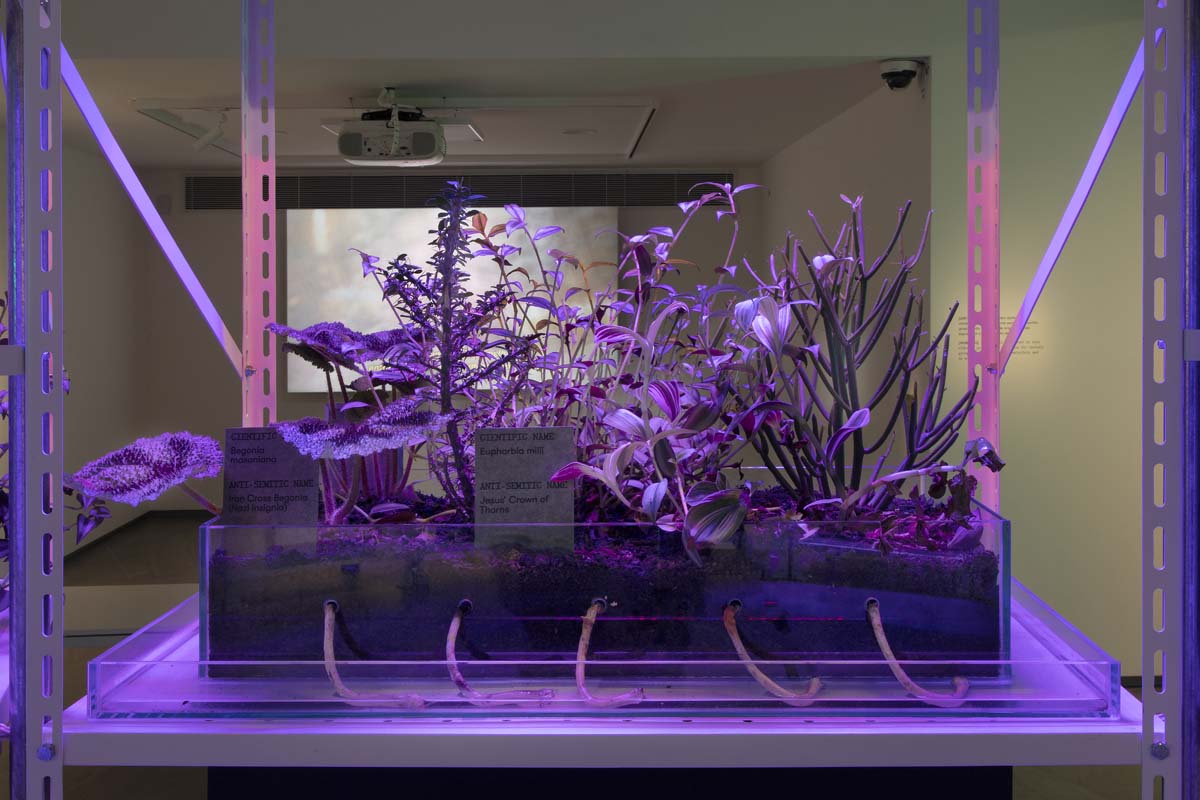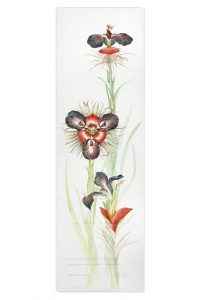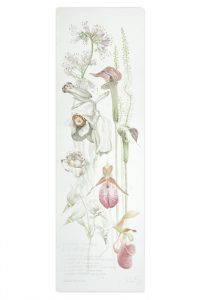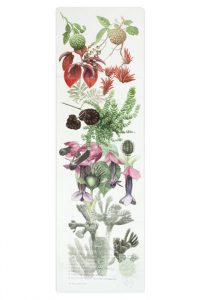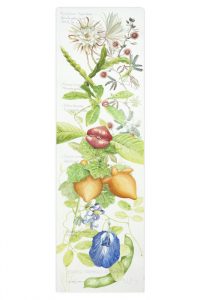Botannica Tirannica is a research-based artwork discussed collectively among a group of collaborators, with contributions essential to the installations forms.
Watercolors (Ricardo Van Steen)
Throughout history, botanical illustration has created an aesthetic of nature and life that isolates detail and subtracts the context of the object depicted. Noteworthy are the artists who broke with this canon, such as the Germans Maria Sibylla Merian (1647- 1717) and Ernst Haeckel (1834-1919), who have integrated the life cycle of insects and microorganisms into their etchings, often making use of juxtapositions of images. In the watercolors by Ricardo Van Steen, this method is revived by grouping disparate plants, which are gathered based on prejudices embedded in their scientific and/or common names against Jews, women, Blacks, indigenous people, Roma, Sinti and Kale. As a whole, they underline the strategies of art and science to test the limits between the real and the fictitious, imitation and imagination.
Soundscapes (Gabriel Francisco Lemos)
For the Botannica Tirannica project, the artist and composer Gabriel Francisco Lemos developed a generative algorithmic composition. In real time, the music creates a continually transforming soundscape, using a method analogous to the one employed in the series of images and videos created with Artificial Intelligence for this exhibition. The acoustic experience is the result of the correspondence between the dimensions of the room where the works are exhibited and the harmonic frequencies of the composition. Listen:
Gardens (Bruno Araújo)
For the gardens of Botannica Tirannica, Bruno Araújo undertook a detailed research of irrigation systems, substrates, materials and ways of life of plants. He needed to understand the possibilities for coexistence between the different species, how their development would adjust to the external elements and the temperatures of air-conditioning, their requirements for water and nutrients in conditions as adverse as an avenue with intense traffic or the shade of the exhibition space. With weekly care, the plants not only survived the adversities imposed but grew, overflowing their vases and organizing their territories, spreading firm, strong weeds into the world where they infiltrate and resist.

